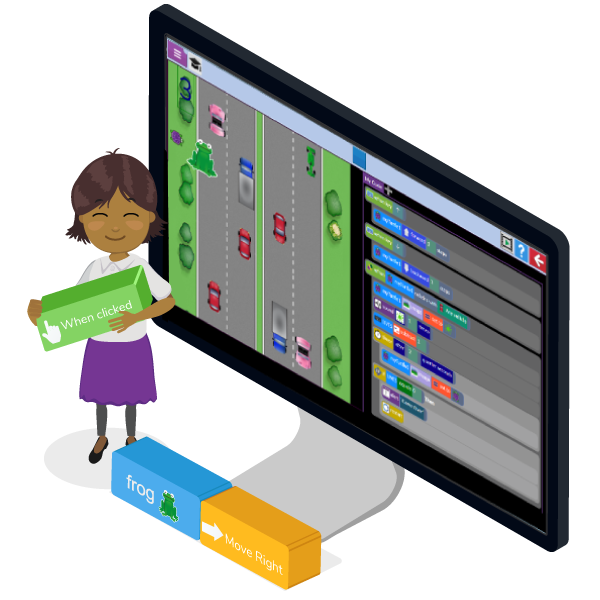May 25, 2022
On 16th May, Ofsted published their research review into the computing curriculum, aiming to 'identify factors that can contribute to a high-quality computing teaching and learning and including factors such as the curriculum itself, pedagogy, assessment and systems in place' (Ofsted, 2022). We’ve taken a close look at the report and identified how Purple Mash meets each of those factors, and throughout this week we're posting a series of blog posts outlining exactly how it does this. Each daily blog will cover 2-3 of the factors in depth, looking at what the report says and highlighting where Purple Mash supports them.
On day 2 of our series, we examine declarative and procedural knowledge, as well as computer science. If you missed yesterday's blog on teacher technical knowledge and pedagogical content knowledge of computing, as well as pillars of progression, read it here.
Declarative knowledge is defined as ‘knowing that’, while procedural knowledge is defined as ‘knowing how’:
‘The report states 'high-quality computing education may have the following features:
Most of the tools used within the Purple Mash scheme of Work are Purple Mash tools specifically designed to provide an appropriate cognitive load to the primary aged learner. Children use increasingly complex tools as they progress through the scheme or use the same tool in more complex ways. In this way they do not have to repeatedly learn the procedural knowledge for simple functions but can focus on new procedural knowledge linked strongly to the declarative knowledge of the unit. The aim is to equip children with concrete skills and understanding of both aspects of knowledge so that they can easily apply them to future technological tools they will encounter.

‘…it is important that any computing curriculum is rich in computer science knowledge' (Ofsted, 2022).
The report states:
High-quality computing education may have the following features

Each year group of the Purple Mash Computing Scheme of Work contains computer science themed units: There is a coding unit in each year that uses 2Code block coding to develop skills and knowledge of the design, code, refinement process of programming and a variety of other computer science units. These range from the beginning of algorithmic thinking in Year 1 with the Lego Builders unit, to introducing the Logo language in the form of 2Go (Maze Explorers) and then 2Logo in year 4.
Children develop their computer science knowledge and skills through game creation (Years 5 and 6) and learning about binary in Year 6; where children can join up the software and hardware functionality of machines to see the inter-relationship between the physical processing and the technological outcomes. The programming units are carefully structured to support children in completing a mental model for good programming that they can apply to future challenges.
‘ If children do not develop a secure mental model of how their programs will execute, they are more likely to make incorrect inferences and may develop misconceptions’ (Ofsted, 2022).
The PRIMM approach, which is incorporated into the Purple Mash lesson structures, helps children to read and predict what code will do when executed so that their own programming efforts can be well structured and purposeful.
This is Part 2 of a series. To read the other parts, click the links below:
Purple Mash and Ofsted's High Quality Computing Curriculum: Day 1
Purple Mash and Ofsted's High Quality Computing Curriculum: Day 3
Purple Mash and Ofsted's High Quality Computing Curriculum: Day 4
A free version of the Purple Mash Computing Scheme of Work is available to download here. You can also try Purple Mash for free to access the full version.